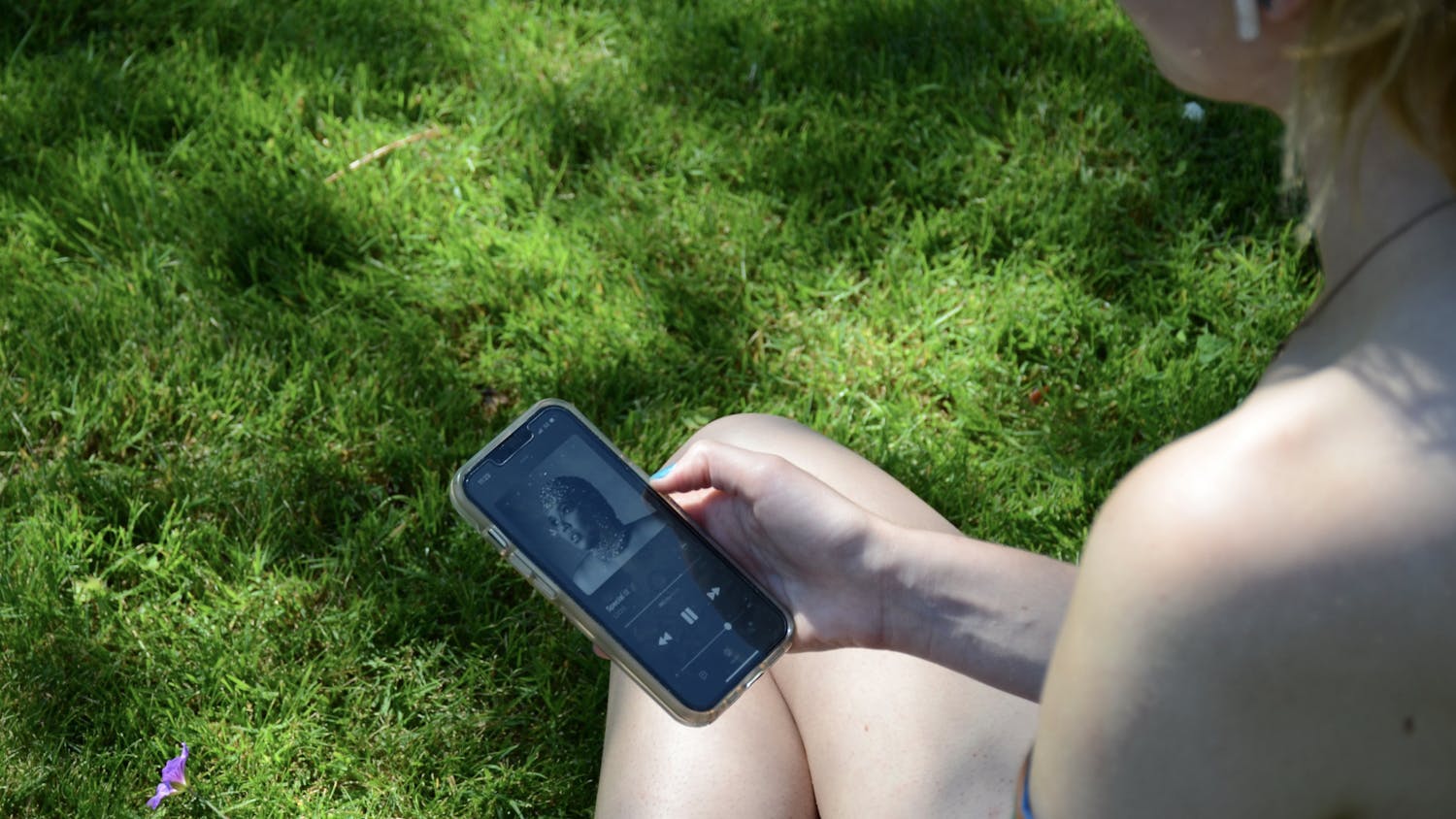![IMG_20150505_093139[1]](http://www.westernfrontonline.com/wp-content/uploads/2015/05/IMG_20150505_0931391-300x225.jpg) Colors pop in the Fibers and Fabrics class as students learn how to manipulate and dye fabric as well as use weaving looms. They make art while working together.
Seiko Purdue teaches the class in the Fine Arts building. There are 20 students working on individual projects, using the same techniques.
Since there are only 10 looms in the classroom, the students split into two groups. One group works on dyeing and manipulating fabric, while the other group weaves with the looms. At about halfway through the class time, the groups switch.
“Right now, I’m working on Katazome,” Sadie Sullivan said, an art student. “So far, it’s my favorite thing we learned.”
Some of the dyeing techniques they have used so far are:
Dyeing silk: using different colors of dye and boiling water in a quick process for about
30 minutes.
Colors pop in the Fibers and Fabrics class as students learn how to manipulate and dye fabric as well as use weaving looms. They make art while working together.
Seiko Purdue teaches the class in the Fine Arts building. There are 20 students working on individual projects, using the same techniques.
Since there are only 10 looms in the classroom, the students split into two groups. One group works on dyeing and manipulating fabric, while the other group weaves with the looms. At about halfway through the class time, the groups switch.
“Right now, I’m working on Katazome,” Sadie Sullivan said, an art student. “So far, it’s my favorite thing we learned.”
Some of the dyeing techniques they have used so far are:
Dyeing silk: using different colors of dye and boiling water in a quick process for about
30 minutes.
![IMG_20150505_090549[1]](http://www.westernfrontonline.com/wp-content/uploads/2015/05/IMG_20150505_0905491-e1431567402339-225x300.jpg) Katazome: a traditional Japanese method for paste resist stencil dyeing, usually for
kimonos. Artists draw designs on rice paper, cut out the design and tape the paper to silk.
Purdue buys the paper from Kyoto. Rice paste is spread over the stencil, then the paper is
removed. After the paste dries, dye is brushed on. When the dye dries, the paste is
washed off.
Katazome: a traditional Japanese method for paste resist stencil dyeing, usually for
kimonos. Artists draw designs on rice paper, cut out the design and tape the paper to silk.
Purdue buys the paper from Kyoto. Rice paste is spread over the stencil, then the paper is
removed. After the paste dries, dye is brushed on. When the dye dries, the paste is
washed off.
![IMG_20150505_093859[1]](http://www.westernfrontonline.com/wp-content/uploads/2015/05/IMG_20150505_0938591-300x225.jpg) Dyeing cotton: one technique is over-dyes. Use one color of dye, then after it dries use
another color. If yellow and blue are applied, they mix to make green.
Dyeing cotton: one technique is over-dyes. Use one color of dye, then after it dries use
another color. If yellow and blue are applied, they mix to make green.
![IMG_20150505_091808[1]](http://www.westernfrontonline.com/wp-content/uploads/2015/05/IMG_20150505_0918081-300x225.jpg) Dyeing polyester: one method is drawing a design on the fabric with a paint brush.
Newspaper is placed on the fabric, and then put in a heat press. The result is an
impression.
Dyeing polyester: one method is drawing a design on the fabric with a paint brush.
Newspaper is placed on the fabric, and then put in a heat press. The result is an
impression.
![IMG_20150505_092336[1]](http://www.westernfrontonline.com/wp-content/uploads/2015/05/IMG_20150505_0923361-300x225.jpg)
![IMG_20150505_092433[1]](http://www.westernfrontonline.com/wp-content/uploads/2015/05/IMG_20150505_0924331-300x225.jpg) Fabric is manipulated, as well as applying dye, to make different effects:
For example, students accordion-folded fabric. Another way is to fold fabric around
sticks and rocks, wrapped with rubber bands. After the process, the fabric is dyed in
various patterns.
Fabric is manipulated, as well as applying dye, to make different effects:
For example, students accordion-folded fabric. Another way is to fold fabric around
sticks and rocks, wrapped with rubber bands. After the process, the fabric is dyed in
various patterns.
![IMG_20150505_092030[1]](http://www.westernfrontonline.com/wp-content/uploads/2015/05/IMG_20150505_0920301-300x225.jpg)
![IMG_20150505_092113[1]](http://www.westernfrontonline.com/wp-content/uploads/2015/05/IMG_20150505_0921131-300x225.jpg) The sewing together method is when pieces of fabric is sewn to itself in various places.
When using color fabric, it’s put in a tub of bleach for 30 minutes, then placed in water.
The bleach lightens the fabric. Once the process is done, the fabric has visible lines and
dashed lines from where it was sewn together.
The sewing together method is when pieces of fabric is sewn to itself in various places.
When using color fabric, it’s put in a tub of bleach for 30 minutes, then placed in water.
The bleach lightens the fabric. Once the process is done, the fabric has visible lines and
dashed lines from where it was sewn together.
![IMG_20150505_092211[1]](http://www.westernfrontonline.com/wp-content/uploads/2015/05/IMG_20150505_0922111-300x225.jpg) “I teach traditional techniques,” Seiko Purdue, Fiber and Fabrics professor, said. “Students
combine these techniques with their own. It’s east and west coming together.”
Sophomore Dawna Chung, an art major, was one of the students working with the looms. “I’m
weaving blue and light blue cotton thread for practice,” Chung said. “This is my third day
working on it. It was confusing at first, but now it’s therapeutic.”
“I think old techniques and traditional technology should be supported,” Purdue said.
The Fibers and Fabrics class will be offered in Fall quarter to art majors and non-majors. Purdue
will teach the class on Tuesdays and Thursdays at 8:30-11:20 a.m.
“I teach traditional techniques,” Seiko Purdue, Fiber and Fabrics professor, said. “Students
combine these techniques with their own. It’s east and west coming together.”
Sophomore Dawna Chung, an art major, was one of the students working with the looms. “I’m
weaving blue and light blue cotton thread for practice,” Chung said. “This is my third day
working on it. It was confusing at first, but now it’s therapeutic.”
“I think old techniques and traditional technology should be supported,” Purdue said.
The Fibers and Fabrics class will be offered in Fall quarter to art majors and non-majors. Purdue
will teach the class on Tuesdays and Thursdays at 8:30-11:20 a.m.





